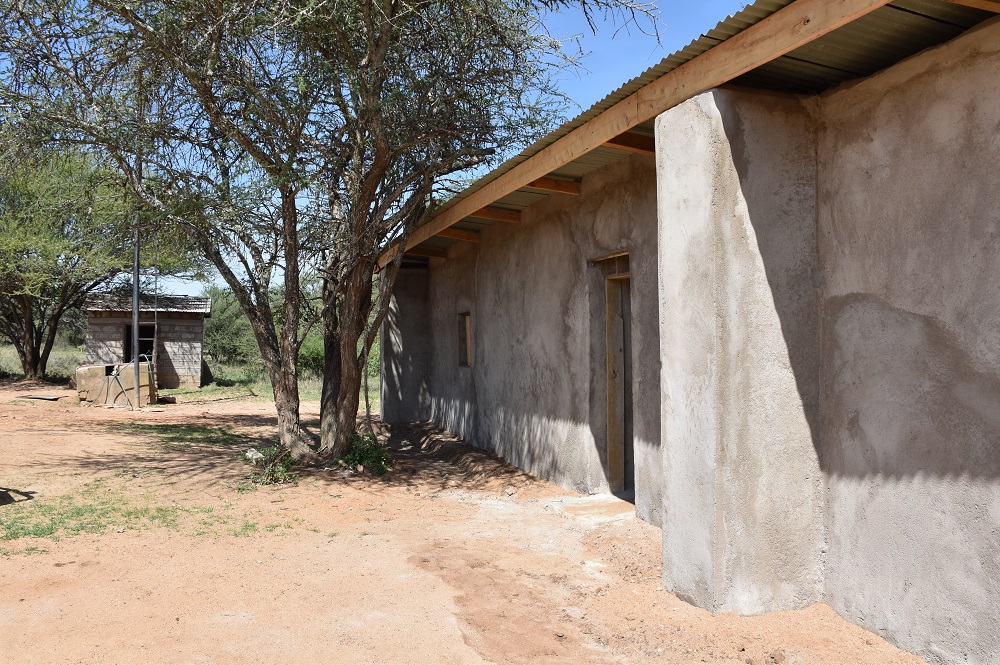Our Partnerships Manager Michaela is currently in Kenya visiting our teams on the ground – read on to find out what she’s up to!
The realities of rhino conservation aren’t always sexy. Often, what’s required to keep rhinos safe from the threat of poaching is getting the basics right; ensuring that structures are put in place to maintain high levels of security at the conservancy and having well-trained, motivated and trust-worthy personnel to rely on. To achieve this, as I learn on my visit to Ol Jogi Conservancy, takes a whole range of behind-the-scenes activities to ensure that rhinos stay safe on their landscape.
Jamie Gaymer, Conservation Manager at Ol Jogi, takes me to see their workshop at the Conservancy. Here, a number of projects are underway. New concrete posts are being constructed for some of the wildlife corridors, which will help ensure that rhinos can’t break through the Conservancy’s boundaries where they could be exposed to a number of threats, while other wildlife can move more freely across the wider landscape. There are modifications being made to Ol Jogi’s new vehicle to ensure that it is best adapted to rangers’ needs and the terrain at the Conservancy. Similarly, this is where new equipment has recently been delivered, such as nano switches, solar panels and camera units, which will be used to install a complex camera system throughout Ol Jogi, not only used to monitor wildlife movements but also to provide another layer of security against any potential intruders.

All of the projects are overseen by Jamie and Anthony, the Workshop Manager. In addition, Ol Jogi has recently started constructing new houses for rangers at outposts, after Anthony reviewed the old houses (built in the 1980s) and concluded they are no longer structurally safe. Anthony and Jamie trialled a new concept for the construction of these buildings, built from sandbags and covered with a layer of cement. This means that the walls are thick enough to provide insulation from hot and cold, in addition to being sound-proof, bullet-proof, and structurally incredibly strong.

The first house, comprising of two rooms, a kitchen area, a shower, and gutters to collect rain water, has now been almost completely finished thanks to funding from our donors including Berlin Zoo, Tierpark Berlin and Hannover Zoo! The next house will be constructed from local stone, after which Jamie and Anthony will conduct a full cost-sensitivity analysis to evaluate what is the most efficient approach in this environment.
The new ranger houses will provide a comfortable and safe place for rangers to rest between their patrols, helping to provide a much-needed morale-boost to rangers protecting rhinos at Ol Jogi.
While these projects might seem quite basic, all of them contribute to maintaining high levels of security and protection of rhinos at Ol Jogi, as well as keeping the staff motivated to do their job safely and happily.








